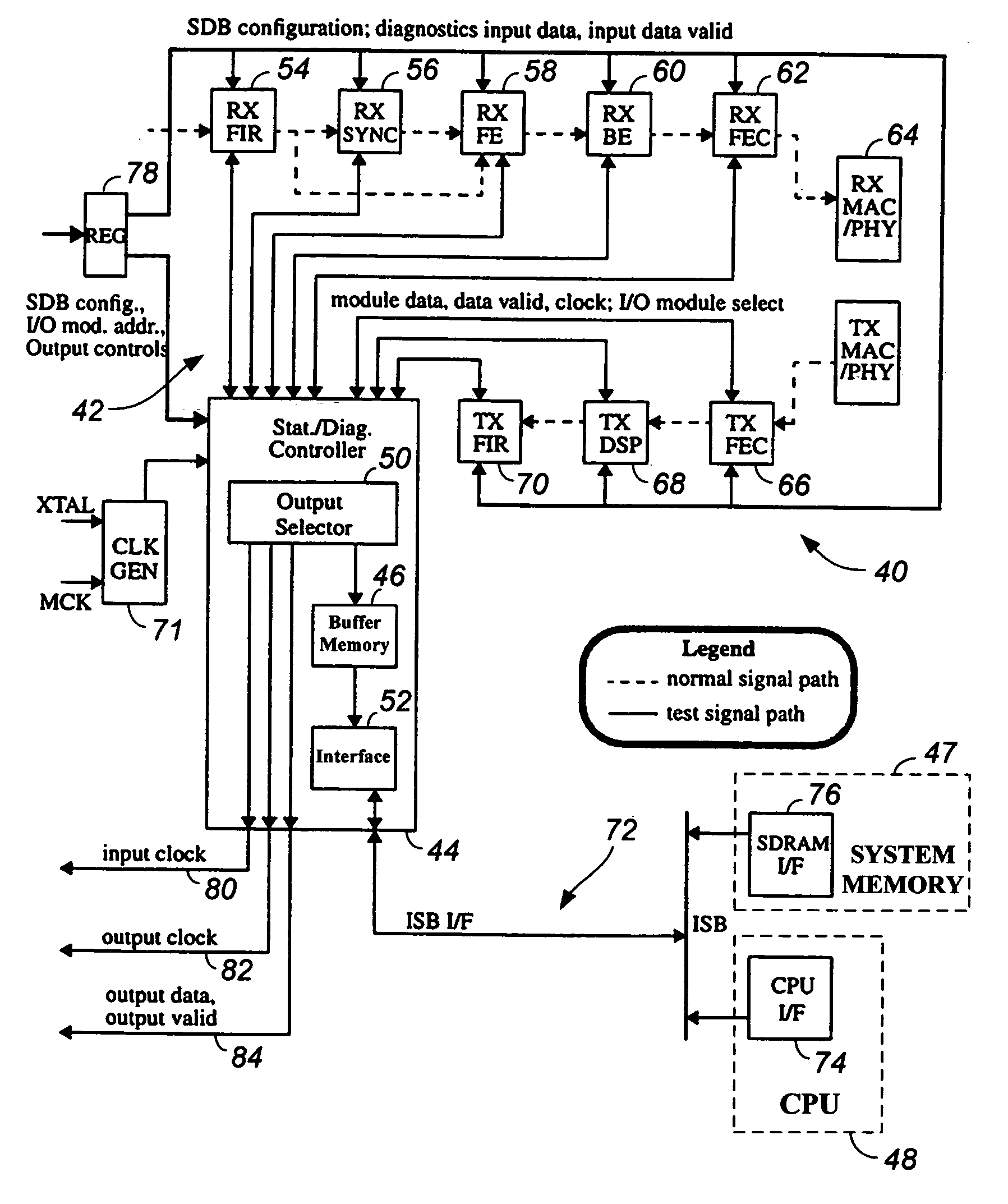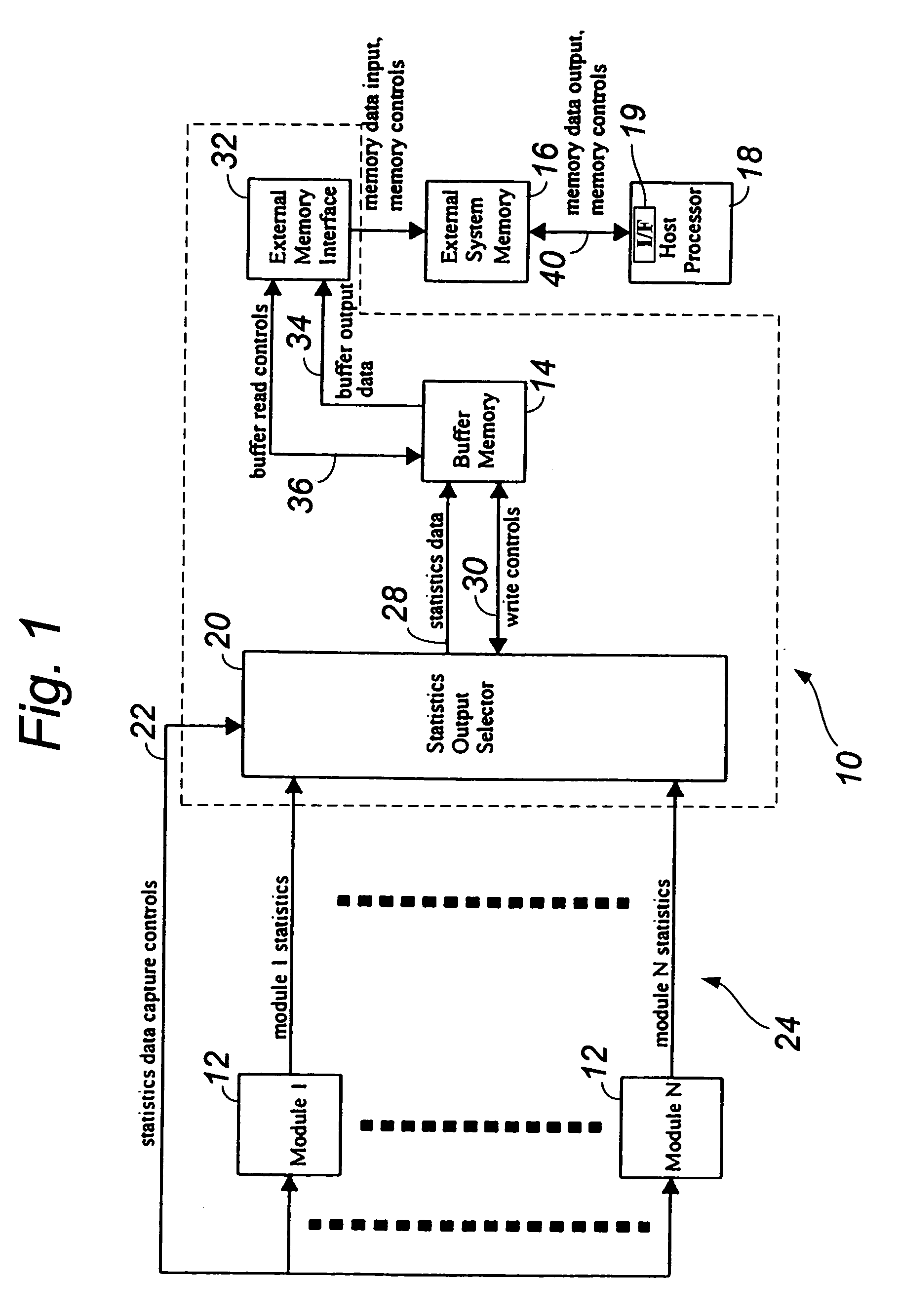Efficient memory allocation scheme for data collection
a data collection and memory allocation technology, applied in the field of data storage, can solve the problems of increasing cost and undesirable use of large on-chip memory to store collected statistics, and achieve the effect of reducing asic manufacturing cost and increasing overall hardware efficiency
- Summary
- Abstract
- Description
- Claims
- Application Information
AI Technical Summary
Benefits of technology
Problems solved by technology
Method used
Image
Examples
Embodiment Construction
[0013]Referring now to the figures, and in particular to FIG. 1, there is shown one illustrative embodiment of a circuit 10 for collecting and transferring data according to the present invention. Circuit 10 receives data from one or more data collecting and / or generating modules 12, and forwards such data to a buffer memory device 14. Buffer memory device 14 periodically transfers the data to an external system memory 16, which is accessed by a host processor 18 for processing of the collected data, as is described in more detail below.
[0014]In one embodiment, circuit 10 is in the form of an application-specific integrated circuit (ASIC) that is designed to collect data from the module or modules 12. For example, circuit 10 may interact with a plurality of modules 12, where each module monitors a particular system function and generates corresponding data. Such data can correspond to various parameters, such as voltage levels, antenna gain, and the like. Thus, it will be understood...
PUM
 Login to View More
Login to View More Abstract
Description
Claims
Application Information
 Login to View More
Login to View More - R&D
- Intellectual Property
- Life Sciences
- Materials
- Tech Scout
- Unparalleled Data Quality
- Higher Quality Content
- 60% Fewer Hallucinations
Browse by: Latest US Patents, China's latest patents, Technical Efficacy Thesaurus, Application Domain, Technology Topic, Popular Technical Reports.
© 2025 PatSnap. All rights reserved.Legal|Privacy policy|Modern Slavery Act Transparency Statement|Sitemap|About US| Contact US: help@patsnap.com



